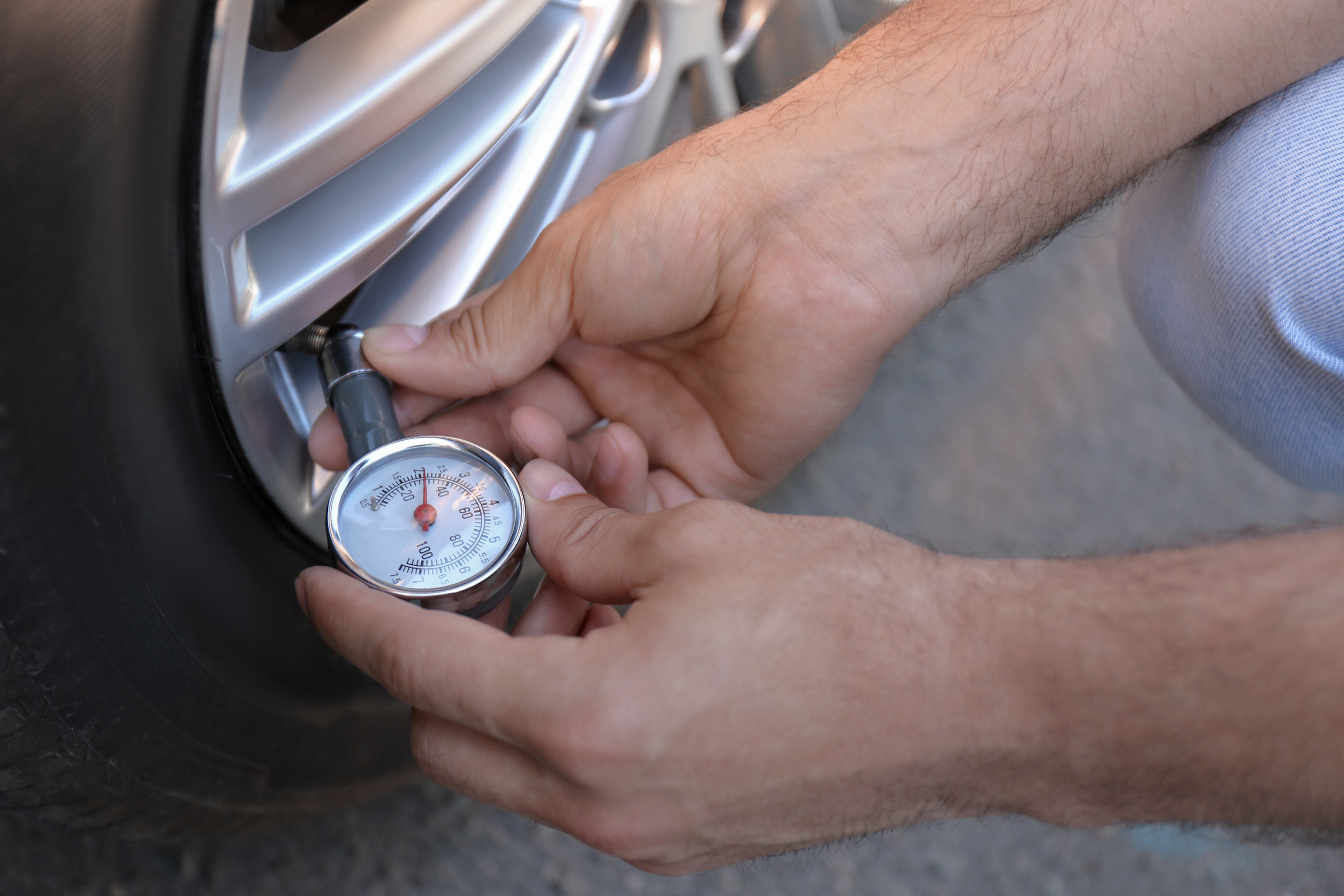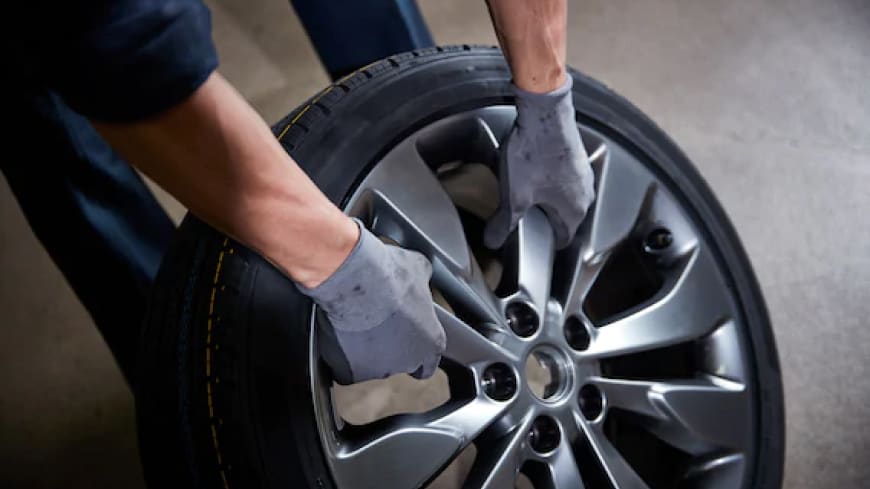Tire maintenance & safety
Tire Valve Stem: Maintenance and Replacement

Best price guarantee
Tire replacement coverage
24/7 roadside assistance
Easy returns
Tire maintenance & safety

Tire valve stems are small but essential components of your vehicle's wheels, allowing you to inflate and maintain proper tire pressure. These seemingly insignificant parts play a crucial role in ensuring a safe and comfortable ride.
However, like any other part of your car, valve stems can deteriorate over time or suffer damage, leading to leaks and other issues. Knowing how to identify valve stem problems and address them promptly is key to maintaining your tires' integrity and performance. In this article, we'll dive into the world of tire valve stems, exploring their function, common issues, and the steps you can take to keep them in top shape. By understanding the importance of valve stem maintenance and replacement, you can help extend the life of your tires and ensure a safer driving experience.
A tire valve stem is a small, cylindrical component that protrudes from your wheel rim, serving as the gateway for air to enter and exit your tire. It consists of two main parts: the valve stem itself, which is typically made of rubber or metal, and the valve core, which is a removable inner component that controls the airflow.
The valve stem is designed to maintain tire pressure by allowing air to be added when needed while preventing air from escaping when the valve cap is securely in place. This simple but crucial function ensures that your tires remain properly inflated, which is essential for optimal handling, fuel efficiency, and tire longevity.
There are two primary types of valve stems: snap-in rubber stems and clamp-in metal stems. Snap-in rubber stems are more common on passenger vehicles and are easily replaced when damaged. Clamp-in metal stems, often found on heavy-duty vehicles or specialty rims, provide a more secure and durable connection but may require professional installation.
Identifying the symptoms of a faulty valve stem is essential for keeping your tires in good condition. One sign to look out for is any physical damage. Examine your valve stems closely for signs of wear, such as brittleness or corrosion, which can lead to air loss.
Listen carefully for any unusual sounds near the valve stem area. A faint hissing noise often indicates a leak. To verify, apply a soapy water solution to the base of the valve stem and observe. The presence of bubbles signifies air escaping, confirming a leak that requires attention.
If your tire pressure frequently drops without a clear reason, the valve stem might be the source of the problem. Consistent difficulty in inflating your tire could point to an obstruction or internal fault within the valve stem. Addressing these signs promptly helps maintain tire safety and performance.

Tire valve stems face several challenges over time that can lead to problems. First, prolonged exposure to various environmental conditions—like sunlight, extreme temperatures, and moisture—causes the rubber material in the stem to degrade. This breakdown results in cracks and brittleness, which can lead to air leaks.
External forces also contribute to valve stem damage. Road debris or accidental contact with curbs may cause physical harm to the stem, affecting its ability to keep an airtight seal. During tire installation or maintenance, mishandling can also damage the valve stem, leading to issues with maintaining proper tire pressure.
Moreover, the valve core within the stem is vulnerable to corrosion. Moisture and road salts can corrode metal components over time, reducing the valve's ability to seal properly. This corrosion can cause persistent air leaks, which negatively impact tire performance and safety.
Lastly, the valve cap, which protects the stem from dirt and moisture, needs careful handling. Overtightening or improper installation can damage the stem or core, compromising the stem's function. Ensuring the cap is secure yet not too tight helps maintain the valve stem's reliability and effectiveness. Regular checks and careful handling of these components are key to avoiding valve stem issues and ensuring tire longevity.
Operating a vehicle with a faulty valve stem introduces several hazards that impact both safety and vehicle efficiency. One major issue is the gradual loss of air pressure, which can subtly affect how the car handles and responds. With decreased tire pressure, the car may not grip the road as effectively, leading to compromised steering and braking performance. Additionally, the vehicle's fuel economy can suffer, as the engine exerts more effort to compensate for the increased rolling resistance of underinflated tires.
A more severe risk involves the potential for tire failure. Tires with insufficient pressure endure excessive flexing, generating heat and increasing the likelihood of a blowout. This can create a precarious situation, especially at higher speeds, where sudden loss of tire integrity may cause a loss of control.
Another consequence of a damaged valve stem is uneven tire wear. Tires that are inconsistently inflated wear down in a patchy manner, leading to a shorter lifespan. This uneven deterioration necessitates more frequent tire changes, raising overall maintenance expenses. Severe leaks that result in flat tires can also lead to rim damage, further escalating repair costs and potentially affecting the wheel's structural soundness.

Replacing a tire valve stem involves a series of precise steps to ensure the safety and functionality of your tires. Begin by placing the vehicle on a level surface and carefully removing the tire that requires attention. Once removed, fully release the air pressure from the tire to facilitate a smooth replacement process.
Extract the Old Valve Stem: Use a specialized valve stem tool to gently remove the existing stem. This tool is designed to grip the stem securely, allowing you to pull it out without damaging the wheel or surrounding components. Ensure to pull it straight to prevent any mishaps.
Install the New Valve Stem: Select a replacement valve stem that matches your wheel's specifications in size and type. Insert the new stem through the wheel's opening, ensuring it fits tightly. Use the valve stem tool to push it firmly into place, confirming it's seated correctly to maintain a proper seal.
After installation, reinflate the tire to the recommended pressure, checking around the valve stem for any air leakage. Applying a soapy water solution can help detect leaks through visible bubbles. Once confirmed secure, remount the tire and ensure all components are properly attached.
If there's any uncertainty about performing this task, seeking assistance from a tire professional is advisable. A professional can ensure the valve stem is installed correctly, maintaining the tire's performance and safety standards, and providing confidence for your travels.
Keeping valve stems in optimal condition plays a crucial role in your vehicle's safety and efficiency. Start by incorporating valve stem inspections into your regular maintenance schedule. Examine them closely for any signs of wear, such as hairline fractures or discoloration, which could indicate the need for attention. A simple wipe-down with a damp cloth helps keep the stems clean and clear of debris.
Valve caps serve a vital purpose in shielding valve stems from harmful elements. These caps provide a protective seal against dust and moisture, which can lead to corrosion of the valve core. When securing the caps, ensure they fit snugly without excessive force to prevent damage. Opt for caps made of resilient materials that offer long-lasting protection against environmental factors.
Exercise care when measuring tire pressure to preserve the integrity of valve stems. Utilize a reliable tire pressure gauge and apply it gently to the valve stem, avoiding any sideward force that could cause harm. Accurate pressure checks contribute to maintaining optimal tire inflation and extending valve stem life.
Incorporating valve stem checks during routine tire maintenance visits is beneficial. Request that your technician assess the condition of the valve stems while performing tire rotations or other services. This proactive measure allows for early detection of potential issues, aiding in the preservation of your tires' overall health. Regular attention to these small components significantly enhances vehicle performance and safety.
Understanding when to reach out to a professional for valve stem concerns is crucial to maintaining vehicle safety. Identifying the severity of a leak can be challenging. If you're unsure about the problem's extent or how to proceed with a replacement, a tire expert can offer valuable insights. They possess the expertise and equipment needed to evaluate the situation thoroughly and provide tailored solutions.
Several circumstances necessitate expert attention. Noticeable damage to the valve stem or adjacent tire parts may indicate deeper issues. If a valve stem exhibits significant wear or if the tire presents considerable damage, such as deep gouges or bulges, it's advisable to have a professional investigate. They can assess whether the tire requires replacement or if additional repairs are needed to ensure optimal performance.
If leaks continue even after replacing the valve stem, further professional examination is essential. This persistence might hint at more complex factors affecting the tire's integrity. Additionally, if you detect other tire-related anomalies, such as irregular tread patterns or compromised sidewalls, these could point to alignment or mechanical issues needing expert evaluation. Engaging a professional ensures a comprehensive approach to resolving these challenges, enhancing your vehicle's safety and tire longevity.
By understanding the importance of tire valve stem maintenance and recognizing the signs of potential issues, you can take proactive steps to ensure your vehicle's safety and performance. Remember, if you're unsure about how to proceed or encounter persistent problems, don't hesitate to seek the assistance of a trusted tire professional. When it's time to replace your tires, shop for tires online with us and find the best deals to keep you rolling with confidence.
Search By